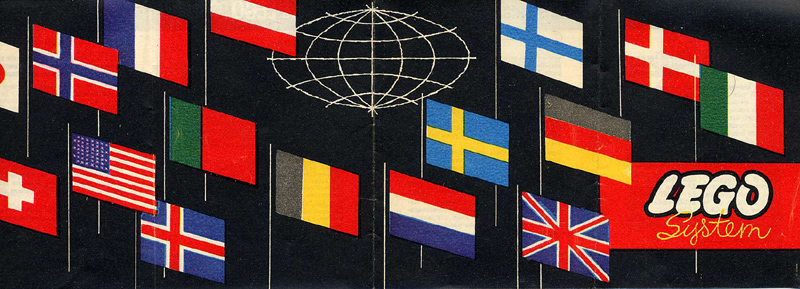
In 2007, after both my parents had passed away, I emptied their house in Baixa, the old center of Lisbon. In a drawer I found a box and inside it, together with other childhood memories, were all my old LEGO sets, that I had completely forgotten. They were bought in a nearby toy store between 1958 and 1962. In 1962 I entered highschool and I started favoring other toys. I used the LEGO less and less, and soon it was forgotten. Seemingly my mother thought that I would, some day, like to have it again and instead of offering the sets to charities, as she used to do with my old stuff, she kept them in storage, never mentioning this to me.
Well, she was right! Once I retrieved the toys, the magic crept out of the small boxes and slowly set in me. During the August 2008 vacation at the seaside, without much to do at night, I decided to examine the trove more closely. As a careful player, I had kept the bricks in their original boxes, albeit mixed, and everything was in good condition. There was a large set nr 308 (Fire Station) and 24 supplemental boxes. I noticed differences in the box covers and on examining the bricks found that I could range those that looked identical in classes because of small differences. Even when there were no major differences, the mold numbers written inside could help date them individually. I emptied the boxes, separated the bricks according to their size and found I could range them chronologically in groups and allocate each group to an individual box because of those differences. I did this and was somewhat surprised to find that all bricks had been used and ranged in a logical manner, without any surplus of uncertain status. But I needed confirmation...
To confirm my conclusions, I decided to buy a number of old sets from Germany and Holland, aiming at untouched material- either collections long laid away, like mine, or sets that, by a miracle of sorts, had been maintained complete or almost so, with their original contents. This task proved simpler than I had foreseen. I quickly confirmed my conclusions and by October 2008 I was probing old sets and separating in a matter of minutes what was original to the boxes, from what wasn't. I found that not everybody was aware of the more subtle differences and the treatment of the older material in the media was always confusing and often erroneous whenever the older issues were concerned. So, I decided to share my results so that everybody could use them and hopefully continue the work from where I left it. The chronology of the successive brick and plate versions makes up the first part of this site and was started in late October 2008 and will be complete by December 2009.
But most of the material bought from Germany was older than my old collection and so I decided I had to follow the thread to its start and I began buying Danish, Swedish and Norwegian sets and bricks. And the more I went back, the more interesting the challenge seemed. Also, the sheer beauty of the old issues got hold of me... And so I decided to improve my site, in praise of older LEGOs.
I ranged the material in two convenient periods:
-the Pre-classical Period is the "Automatic Binding Bricks" and "LEGO Mursten" period, from 1949 to 1954;
-the Classical Period is the "System i Leg" period and starts in 1955 with the integrated "System in Play" (which was what made the brand really different and superior to the competition) and finishes in 1957/58 with the piecewise introduction of the brick tubular connectors.
These make up what I call the Golden Age of LEGO, the time span that interests me most. The Classical Period is followed by the "Patent Pending" period, so called because of the notice that marked bricks and boxes during the late '50s and '60s, while the patents for the tubular connectors had not been definitively granted. I only dwell into the beginning of this third period because of the obvious continuity issues with the previous and because my old sets bought in Portugal overlap it.
The second part of my site will deal with historical issues, boxed sets contents, the chronology of graphics and all information aimed at avoiding anachronism in collections.
Finally, one thing leads to the other and my interest in LEGO led me to other plastic construction toys, those that came before or were developed simultaneously with LEGO, like Kiddicraft (originator of the early LEGO bricks) and IDEMA, and those that came after, some of which cloning LEGO (like Betta Builda or PEBE), others developing worthy innovations (like RASTI or Universal Plastik). The third part of my site will be dedicated to these other plastic construction systems, often eclipsed by the shine of LEGO, but well worth studying and preserving.
And now a small request:
I have not built with LEGO since I was the proper age. My interest for the brand has many facets, but they are all technical (bearing on history, marketing, technology and graphics). These pages are technically-minded as a source of information to all interested in the field.
My e-mail is below, but please don't contact me unless you have information to correct or improve mine, a fine point to discuss, or else if you have material for sale that may improve my collection as a data source. Don't ask me for prices (this is not a commercial site and nothing is for sale).
Thank you.